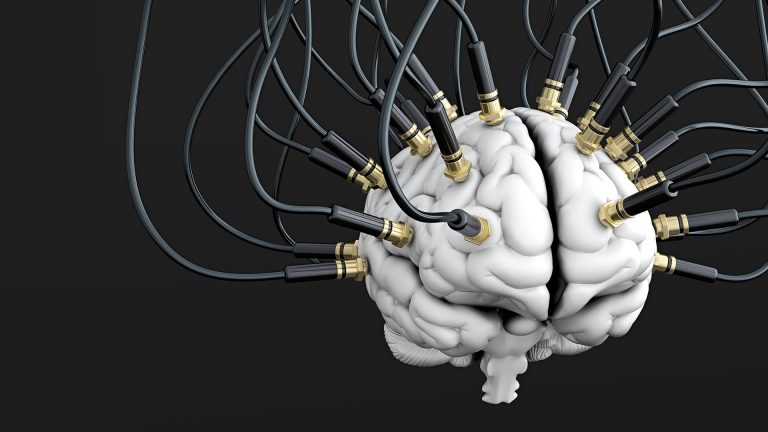Once, your mind was a place that only you could go. But now, anyone can drop in and hear your thoughts. Mind-to-mind communication has finally arrived. How would it change team sports? Could you share images and feelings? Would everyone know your most private thoughts?
Telepathy is real. No, not that type of telepathy. I’m talking about scientifically created telepathy that uses electroencephalography, or EEG. Brain-to-brain communication first happened in 2014, during an experiment conducted by Starlab, Axilum Robotics, and Harvard Medical School.
But participants were only able to send and receive simple messages. And they had to use binary codes to spell out each word. It was slooooow. It could take up to 70 minutes to send and receive a four letter message. It was more like Morse code than real telepathy. But in the future, could there be fully functional telepathy equipment?
We have a long way to go before we can share our thoughts seamlessly with someone else. But it’s not impossible.The 2014 study had to use binary codes to send messages because scientists don’t know how the brain codes electrical signals. But if we can decode our brains’ language, we would unlock our full telepathic potential.
We’d also need to create wearable tech. This is definitely not fashionable. Instead, you’d have smaller EEG readers that look slicker and cooler. Eventually, you could have the option of having the EEG reader permanently installed under your skin. But that could leave you vulnerable to hacking.
The EEG reader would allow you to send thoughts as an electrical code. But you’d also need something to receive code from other people.
This is where magnets come in.A magnetic receiver would take electrical signals, translate them, and then send currents through your brain tissue.
And we’re not just talking about words here, but images and feelings too.In the 2014 study, scientists used a magnetic receiver to activate a part of the visual cortex, which triggered light flashes called phosphenes. If scientists unlock how the brain works, different parts of your brain could be triggered for different types of communication.
But this is where we get into some sticky areas, because what if you don’t want someone reading your thoughts? To protect people from invasive mind readers, the telepathy technology would need strong protection Memories, dreams, fears, your passwords – there are some things you don’t want other people to know.
If you were to have a removable EEG reader, you could put it on only when you want to use it. But an implanted EEG reader would need some sort of Off button. Otherwise, you’d be vulnerable to mind reading hackers accessing all of your thoughts. And you’d also have to practice focusing your mind. Once that communication channel is open, anything could be sent through it.
Even those snippets of daydreams that you don’t want anyone else to hear or see. With widespread telepathy, our world would change drastically. You’d see team sports where the players are linked up together, moving in synchronized motion, and complex game plays. Creators and innovators would be able to share their ideas easier.
Instead of trying to put thoughts that are hard to communicate into words, you could simply share your thoughts with others. And when you can access other people’s thoughts, and they’re accessing yours, you’d need a way to disconnect. Your brain would be pretty cluttered if people could just send you thoughts all day and night long.
And sometimes, you might not want to know what another person is thinking. Privacy would become more rare, and new mental health issues could arise from extended use of telepathy. If scientists could truly unlock the mysteries of the brain, then the possibilities are endless.
Virtual reality simulations could be sent right into your mind. You could record your dreams. And maybe, you could even upload fake memories.
Sources
- “Brain-To-Brain Communication Is Finally Possible. It’s Just Very Clunky.“. 2014. Vox.
- “Telepathy Is Real | Inside Science“. 2018. Insidescience.Org.
- “The Top 13 Most Famous Mentalists“. 2021. Vanishingincmagic.Com.
- “Evolution Of Collective Behaviour In An Artificial World Using Linguistic Fuzzy Rule-Based Systems“.Demšar, Jure, and Iztok Lebar Bajec. 2017.
- “What It Means When Two Particles Are Entangled“. 2021. Thoughtco.
- “Mitsubishi Heavy Industries Brandvoice: Turbines That ‘Talk’ To Each Other And Other Smart Tech Propelling The Future Of Offshore Wind Power“.Contributor, Mitsubishi. 2021. Forbes.
- “How Do Starling Flocks Create Those Mesmerizing Murmurations?“. 2013. All About Birds.


















